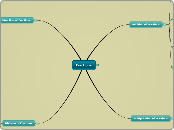The Mystery of Fractions
5. How do we:
Work with Mixed Numbers
The link discusses mixed numbers and how to work with them.
Mixed numbers are also called "Mixed Fractions."
- A mixed fraction is a combination of a fraction and a whole number.
Example:
2 + 1/4 is a mixed number.
We can multiple 4 x 2 and then we can add 1 to get 9. Our answer would then be 9/4. This is how we simplify fractions that have a bigger numerator than a denominator.
Equivalent Fractions
The link discusses equivalent fractions and provides problems for students to use as a form of practice.
- Equivalent fractions can be found when you divide the numerator and denominator by one common factor.
For example:
12/6 can be divided by 2, so 12/6 is equivalent to 6/3.
Have students try the examples that are listed at the bottom of the weblink for How to Simplify Fractions.
Compare Fractions
- The video describes the use of comparing fractions using the Butterfly Method. After watching the video, have students work with a partner to compare fractions with one another, and to think of two fractions they can compare. Call on a couple of pairs and see what they discussed.
Butterfly Method
Multiply Fractions
The attached video link gives a visual of how students multiply fractions.
Example:
3/1 x 3/8 = ____
We don't have to find a common denominator when multiplying.
We simply multiply our numerators: 3 x 3 = 9. Next, we multiple our denominators: 1 x 8= 8. Our answer is then 9/8. This is a mixed fraction which we will learn about later.
2. Multiply the denominators of both fractions.
1. Multiple the numerators of each fraction.
Divide Fractions
Use the attached link to discuss dividing by fractions with students.
Using the Reciprocal
We use reciprocals more often when we are using equations and we need to move fractions from one side of the equation to the other.
For instance if we have:
5 = 2/3x
We need to multiply 2/3 by it's inverse to "Cancel" it out. The inverse is 3/2. The inverse is then multiplied by 5, on the other side of the equation:
5/1 x 3/2= 15/2 (7+1/2).
so, X=15/2 (7+1/2)
Algorithm 3: Division by the "invert & multiply" rule
Algorithm 3 asks that we use the inverse-and-multiply rule:
Example:
5/6 divided by 1/3=____
Our numerators are 5 and 1. Our denominators are 6 and 3. We multiply our numerator from the first fraction with our denominator from the second fraction= 5 x 3= 15. We then multiply our numerator from our second fraction and our denominator from our first fraction 1 x 6.
Our new division problem becomes:
15/6 (In a mixed fraction this is equal to a simplified 2 + 1/2)
Algorithm 2: Division by finding common denominators
Using this algorithm, we want to find a common denominator, just like we do when we add or subtract.
Example:
7/14 divided by 6/7= ____
multiples of 7: 7, 14, 21
multiples of 14: 14, 28
Our least common denominator then is 14.
7/14 does not have to change, but we need to change 6/7 so there is a 14 in the denominator. To do that, we multiply 7 by 2 and we have to also multiple our numerator by 2. So our new division problem is:
7/14 divided by 12/14= _____
Since we have the same denominator, we only divide our numerators, so our answer is 7/12.
Algorithm 1: Divide by finding common numerators
Find common numerators:
3/4 divided by 1/8:
Let's use the numerator of 3.
3/4 already has a numerator of 3. So we just need to change our second fraction's numerator: 3x1= 3. What we do to our numerator, we must also do to our denominator, so we must multiply 8 by 3 as well, which equals 24.
Our division problem is now:
3/4 divided by 3/24.
Our 3's do not change, instead, we just divide our denominators=
4/24 (1/6).
Subtract Fractions
- Find common denominators
- Subtract your numerator and use the common denominator as the bottom part of your fraction.
*To find a common denominator we have to think of common multiples for both numbers in the denominator!
Example:
5/7-3/7= _____
- 5-3= 2
- Keep common denominator of 7.
- Answer: 2/7
2. Subtract the numerator in the first fraction from the numerator in the second fraction. Keep the same common denominator on the bottom.
1. Make sure both fractions have a common denominator
Refer to above link in Adding Fractions for finding a common denominator
Add Fractions
Example:
2/3 + 1/3= _____
- Add the numerator: 2 + 1
- Keep your common denominator of 3
- 2+ 1 = 3
- Answer = 3/3 (equivalent to 1)
2. Add the numerators of your first and second fraction. Keep your common denominator on the bottom.
1. Make sure both fractions have the same denominator
You might have to find a common denominator
Example:
2/5 + 3/4 = ____
*Think of the multiples of 5 and 4
5: 5, 10, 15, 20
4: 4, 8, 12, 16, 20
The common multiple is 20, and we can use it as our denominator. How many times did we multiple 5 to get 20? 4. So 4 x 2= 8 which equals: 8/20 + 3/4. Now let's change our fraction of 3/4 so that it also has a denominator of 20.
We multiplied 4, five times, to get 20. So 4 x 3= 12. 12/20
Our new fractions are:
8/20+12/20= 20/20 = 1.
4. Fraction Models
Number Lines
Number lines can be used with fractions to show parts of a whole. If we have a number line from 0 to 1, we can mark our number line with integers that are between 0 and 1. These integers are fractions, such as 1/4, 1/3, and 1/2. Number lines can give us a visual representation of these fractions.
The Set Model
Use this interactive set model link to demonstrate how fractions display parts of sets. Have students practice along with you and answer the questions that are provided in interactive lesson.
Fraction Circles
- Fraction circles correspond to the denominator. Use the attached print-out so that students have a visual of how a fraction circle works.
Fraction Strips
Use the fraction strips worksheet that is attached to this subtopic. This will give students a visual of what fraction strips are. Use the second worksheet that is blank, to ask students to color in the fractions that are provided.
- Fraction strips are another visual representation of how a rectangle can be broken down into smaller sub-rectangles.
Colored Regions
Colored regions are used to visually show what a unit looks like when it is subdivided into multiple regions.
- Draw a circle on the board and create 8 subregions. Color in 4 regions and write the fraction: 4/8 and 1/2. Explain how the circle's colored regions are displaying a fraction.
3. Definition Pit-Stop
Denominator
This is the bottom part of the fraction.
Example:
In the fraction 2/3, the denominator is the 3.
Numerator
This is the top part of the fraction.
Example:
In the fraction 3/4, the numerator is the 3.
2. Important Questions to Ask
- What is the unit or whole?
- Into how many parts (the denominator) has the unit been subdivided?
- How many of the parts (the numerator) are under consideration?
1. Introduction
Before video, ask students to write down as much as they know about fractions and using them. Listen to their ideas and write them on the whiteboard and discuss.
6. Practice
Classroom Practice
A Composition of Fraction Application
Coloring the Whole
- You could make this worksheet a "timed" activity to see how quickly students can finish their worksheet.
- Alternatively, make it a partner activity. Students who are higher-level learners can work alone or assist another student.
Fractions FlipBook
- Have students complete and fill out their fraction flip book. This will give them practice using number lines and fraction circles.
Online Practice
- Students can use computers or classroom iPads to play these games which enhance their skills.
Multiplying Fractions
This is a millionaire game where students get to practice multiplying fractions.
Dividing Fractions
Students play a soccer game to practice their division skills.
Subtracting Fractions
This is a fruit activity that helps students work with fractions that they subtract from one another.
Adding Fractions
Students play a race car game that integrates adding fractions.
7. Relaying Real Life Application
Shopping
Linked is a Prezi that discusses how fractions relate to every day life when we are out shopping.
Brainstorm
Ask students if they can brainstorm ways that fractions are important or are a part of their daily lives.
- Students can work with a partner.
The "Real World"
School age children discuss real life application and why we need to learn fractions.
Baking
This is a baking video that discusses how we use fractions every day when baking.
8. Assessment
Test 1
Link attached to assessment that can be printed for students.
Test 2









